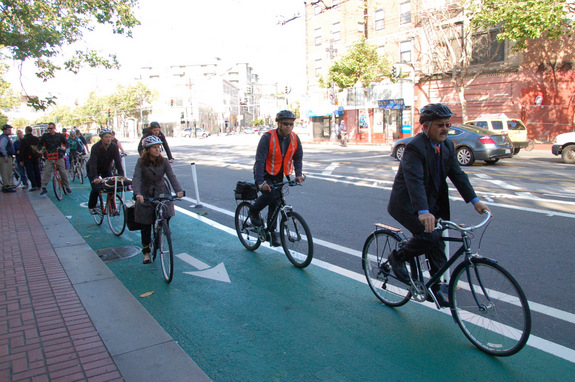Transparency is extremely important to us, so we are letting you know that we may receive a commission on some of links you click on from this page. See our disclaimer.
 We know workplace wellness programs are important at the office… what about on the way to the office?
We know workplace wellness programs are important at the office… what about on the way to the office?
A new study in the Journal of Epidemiology & Community Health — titled Impact of changes in mode of travel to work on changes in body mass index: evidence from the British Household Panel Survey — investigated whether there is any causal relationship of “active commuting” with body mass index (BMI):
“Public health guidelines encourage adults to undertake at least 30 min of moderate-intensity physical activity daily to help prevent obesity and several other chronic conditions. While opportunities to increase time spent being active at home or during leisure or work time can be costly or limited, incorporating walking or cycling into the journey to and from work may represent a relatively low cost, more feasible option for many people.”
The bottom line? Switching from motorized commuting to active travel or public transit — which includes walking or biking to a station — can help bring down one's BMI.
The study states: “Our observation that switching from private motor transport to active travel or public transport was associated with a reduction in BMI, even in a relatively short-time period of under 2 years, suggests that a shift in the proportion of commuters using more active modes of travel could contribute to efforts to reduce population mean BMI.”
The Wall Street Journal reports that “Another study of 12,000 people in U.S. metro areas published in July in the online journal PLOS One found a robust association between biking or walking to work and lower body-mass index. Researchers say active commuting holds promise to help people keep weight off once they lose it, which is particularly striking as most people who diet eventually regain the pounds.”
“The results seem so convincing and yet commuting is a highly difficult habit to change. Every minute counts to people rushing to get a family out of the house in the morning or scrambling to get dinner on the table in the evening. Workers in metro areas spent 47.8 minutes commuting via public transportation, versus 24.2 minutes for those who drove alone, according to a 2009 analysis of U.S. Census data.”





0 Comments